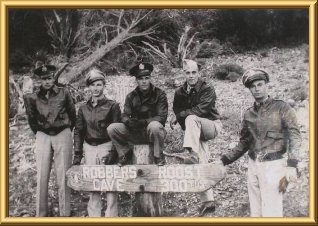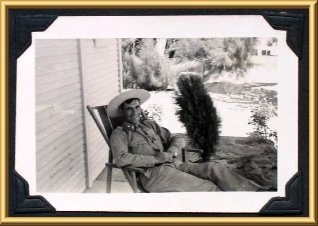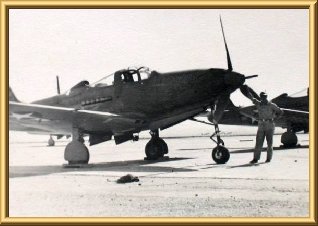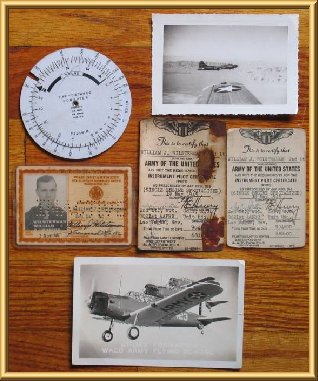The greatest fighter pilot in
history (Erich Hartman – Germany) was credited with shooting
down 352 aircraft, and yet his own plane was never struck by a
bullet fired from another aircraft. William J.
Wilsterman (USAAF) never managed to shoot at an airplane, yet his aircraft was struck by hundreds of bullets.
The Army has long recognized the value of offering soldiers the most realistic combat simulation training as possible. Training WWII bomber gunners proved to be especially challenging. There is nothing quite like shooting at a 350 mph maneuvering German or Japanese fighter from a 150 mph lumbering bomber. By the beginning of 1945, the US Army Air Force had decided that new gunners needed something beyond simulation; they needed REAL experience shooting live ammunition, at real, piloted aircraft. Army engineers decided that American fighter planes looked very much like their German and Japanese counterparts, and shooting at them would provide the realistic experience that they were looking for. The problem with giving students an experience this real would be avoiding the destruction of the American “target fighters” and their pilots, provided the students actually learned to hit what they were shooting at.
After much testing, the Army developed a somewhat bulletproof fighter plane. They took the latest Bell fighter, the P-63, removed its guns to save weight, and then armor plated its front surfaces with hardened aluminum and bullet proof glass. A big key to the bullet proof plane concept lie in the “frangible bullets” development. Frangible bullets were made from powdered lead and Bakelite plastic which shatter into dust upon impact with the hardened aluminum. When they felt that the “bullet proof” RP-63 and frangible bullets were good enough, they put them into service. Naturally, the Army Air Force Flexible Gunnery School instructor pilots were the lucky ones to inherit the privilege of finding out just how bullet proof these new bright orange planes were.
From June of 1943 through the end of the war, William Wilsterman was an Army Air Force Flexible Gunnery School instructor pilot at Las Vegas Army Airfield in Las Vegas Nevada. On three occasions in one month “Bill” discovered imperfections to this new system. Although the RP-63’s frontal surfaces and glass were armored, there was a sweet spot where the two met. On a gunnery target mission, part of one frangible bullet managed to squeeze through this seam and hit him on the face. Fortunately the fragment had expended most of its energy while entering the plane and Bill’s Oxygen mask absorbed most of what it had left. Another problem with the RP-63/frangible bullet system was that the aircraft was only armored for frontal bullet strikes. Students manning the guns in the B-17s were instructed to only shoot while the attacking RP-63 was approaching them. To avoid collision, the RP-63 would need to “break away”, exposing the soft skinned unarmored surfaces of the aircraft. One overly excited gunnery student continued to fire at Bill’s RP-63 while he broke away. Bullets impacted his left aileron with enough force to knock the joystick out of his hand. Bill landed that mission with several holes in his “bullet proof” plane. Like the P-39, the P-63 had an air scoop above the mid-mounted engine. The RP-63 version was fitted with a series of baffles to stop any bullet that found its way into this scoop. With just the right series of ricochets however, fragments of the frangible bullets could find their way into the engine compartment and puncture vital parts, such as a glycol line. Bill once landed a smoking RP-63 after such a hit. The aircraft had lost all of its coolant and the engine certainly would have seized had it been required to run any longer. A handful of other RP-63 target pilots were not as lucky and ended up bailing from their stricken aircraft. Later versions of the RP-63 were fitted with better scoops that faced rearward.
William Wilsterman
has four children (one deceased). After receiving his
Public Accounting License, he owned an accounting firm for over
50 years. Bill now lives in Tallmadge, Ohio with his wife,
Harriette, in the home of his daughter, son-in-law and
granddaughters. Bill fills his days tinkering, making
crafts, repairing things and spending time with his
granddaughters. He is a member of the Lion's Club, Knights
of Columbus, Our Lady of Victory Church and the City of
Tallmadge Income Tax Board of Review. He is now 90.
War Biography written
by David Hall (son-in-law)
Click to enlarge any picture










